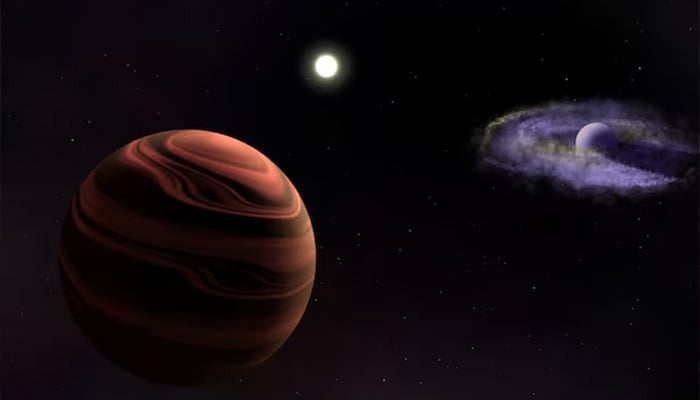Webb telescope spots infant planets in different stages of development
Astronomers detected more than 5,900 planets beyond our solar system since 1990s
June 12, 2025

The James Webb Space Telescope has observed two large planets at different stages of infancy — one with an atmosphere brimming with dusty clouds and the other encircled by a disk of material — orbiting a young sun-like star in a discovery that illustrates the complex nature of how planetary systems develop.
The two gas giant planets, both more massive than our solar system's largest planet Jupiter, were directly imaged by Webb in a planetary system located in the Milky Way galaxy about 310 light years from Earth in the direction of the constellation Musca. A light-year is the distance light travels in a year, 5.9 trillion miles (9.5 trillion km).
Astronomers have detected more than 5,900 planets beyond our solar system — called exoplanets — since the 1990s, with less than 2% of these directly imaged like these two. It is rare to find exoplanets in their early developmental stages.
The birth of a planetary system begins with a large cloud of gas and dust — called a molecular cloud — that collapses under its own gravity to form a central star. Leftover material spinning around the star in what is called a protoplanetary disk forms planets.
This planetary system was observed by Webb very early in its developmental history. The star, named YSES-1, is about the same mass as the sun. The two planets orbit a long distance from the star, each probably needing thousands of years to complete a single orbit.
While the sun is roughly 4.5 billion years old, this star is approximately 16 million years old, a veritable newborn. The researchers were surprised to find that the two neonatal planets observed by Webb appeared to be at different stages of development.
The innermost of the two has a mass about 14 times greater than Jupiter and orbits the star at a distance 160 times greater than Earth orbits the sun and more than five times as far as our solar system's outermost planet Neptune.
The planet is surrounded by a disk of small-grained dust, a state one might expect in a very early stage of formation when it is still coalescing, or perhaps if there has been a collision of some kind or a moon is in the process of taking shape. Webb spotted water and carbon monoxide in its atmosphere.
The outermost planet has a mass about six times greater than that of Jupiter and orbits the star at 320 times the distance of Earth to the sun. Its atmosphere is loaded with silicate clouds, differing from our solar system's gas giants. Webb also detected methane, water, carbon monoxide and carbon dioxide in the atmosphere. It has no disk of material around it.
The puzzling combination of traits presented by these two planets in the same system illustrates "the complex landscape that is planet formation and shows how much we truly don't know about how planetary systems came to be, including our own," said astrophysicist Kielan Hoch of the Space Telescope Science Institute in Baltimore, who led the study published this week in the journal Nature.
"Theoretically, the planets should be forming around the same time, as planet formation happens fairly quickly, within about one million years," Hoch said.
A real mystery is the location where the planets formed, Hoch added, noting that their orbital distance from the host star is greater than would be expected if they formed in the protoplanetary disk.
"Furthermore, why one planet still retains material around it and one has distinct silicate clouds remains a big question. Do we expect all giant planets to form the same way and look the same if they formed in the same environment? These are questions we have been investigating for ages to place the formation of our own solar system into context," Hoch said.
In addition to amassing a trove of discoveries about the early universe since becoming operational in 2022, Webb has made a major contribution to the study of exoplanets with its observations at near- and mid-infrared wavelengths.
"Webb is revealing all sorts of atmospheric physics and chemistry happening in exoplanets that we didn't know before, and is currently challenging every atmospheric model we used pre-Webb," Hoch said.











